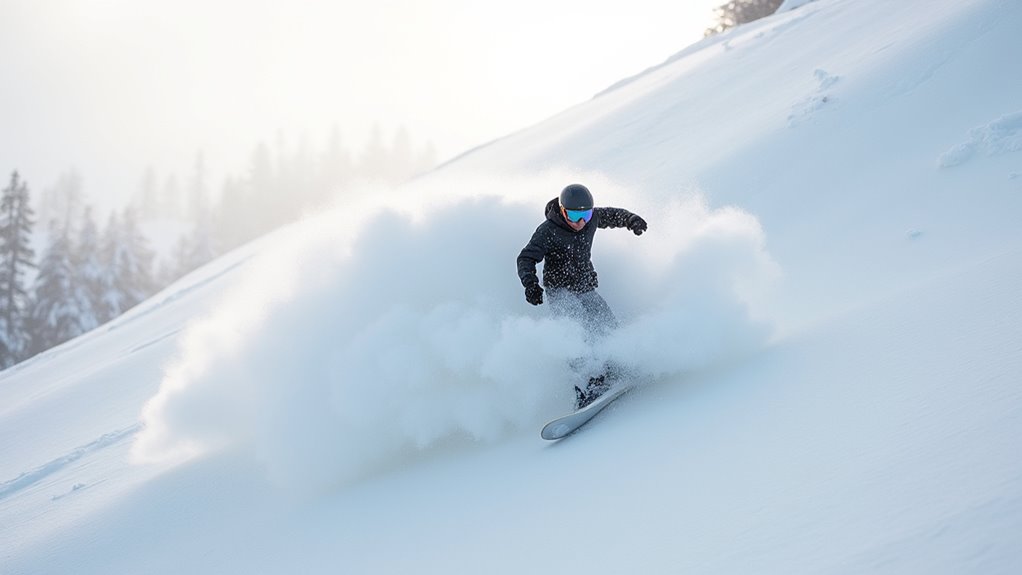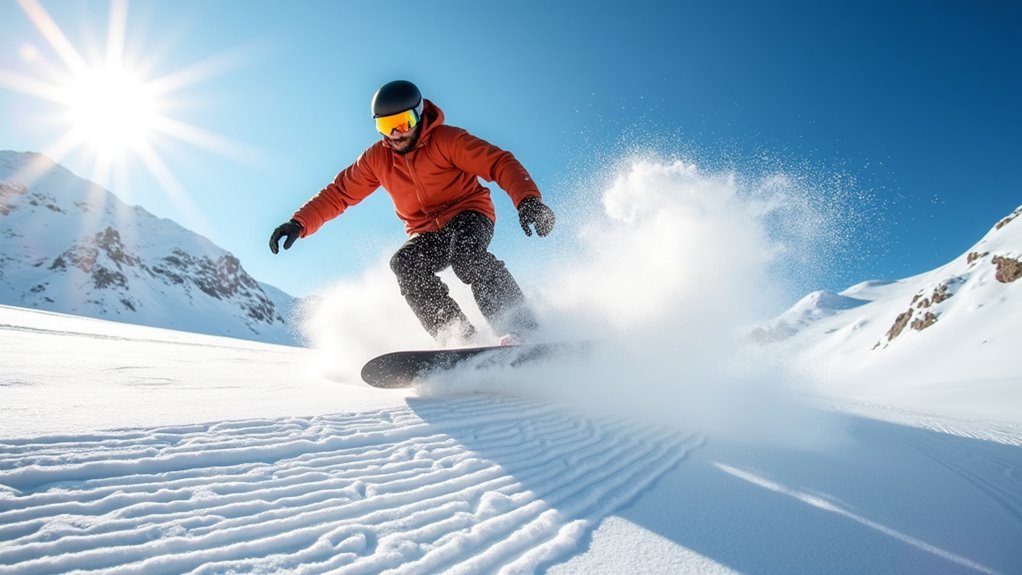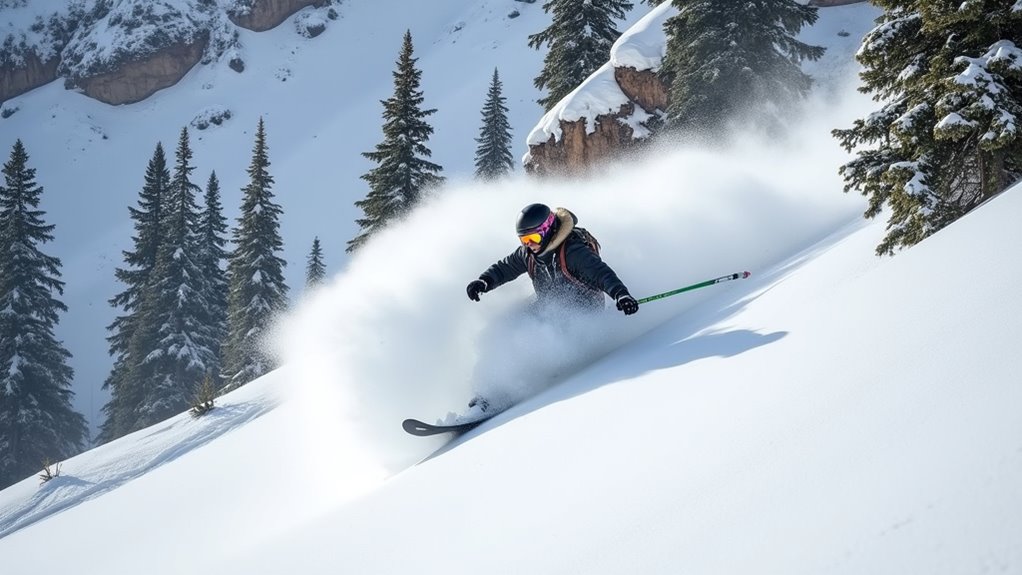Physical Address
304 North Cardinal St.
Dorchester Center, MA 02124
Physical Address
304 North Cardinal St.
Dorchester Center, MA 02124

Transform your powder struggles into effortless floating with these five game-changing techniques that most snowboarders never discover.
You’ve probably felt that moment when you drop into untouched powder and immediately struggle to stay afloat, fighting the snow instead of dancing with it. Most snowboarders approach deep snow with the same techniques they’d use on groomed runs, which explains why they end up face-first in the fluff. Powder riding isn’t just about going fast or leaning back—it’s a completely different art form that requires specific techniques, equipment adjustments, and a fundamental shift in your riding mentality.

When you’re carving through fresh powder, controlling your speed becomes a delicate dance between gravity and technique. You’ll need to develop a rhythmic flow that’s different from groomed runs. In powder, you can’t rely on sharp edge control like on hardpack – instead, you’re surfing through snow.
Start by making larger, flowing turns rather than quick direction changes. Your board should plane on top of the powder, not slice through it. Keep your weight centered and resist leaning back, which kills your control.
Practice a consistent tempo: turn, pause, breathe, turn. This rhythm helps you read the terrain ahead. If you’re looking to upgrade your powder snowboarding setup without breaking the bank, consider exploring affordable camping gear resources that often feature discounted outdoor equipment including snowboarding accessories.
While your regular stance works fine on groomed trails, powder demands subtle but essential adjustments that’ll transform your riding experience. These tweaks help you float effortlessly through deep snow rather than fight against it.
Key stance modifications for powder riding:
These adjustments mirror surfing techniques, which makes sense since powder riding feels remarkably similar to floating on waves. Just like expecting moms need specialized tips for outdoor activities, powder snowboarding requires adapting your approach to handle unique conditions safely and effectively.

The bounce turn revolutionizes how you’ll navigate powder by replacing aggressive carving with rhythmic, vertical movements that work with the snow’s natural buoyancy. Instead of forcing edge-to-edge transitions, you’ll compress your legs downward into the snow, then extend upward to initiate each turn.
This technique originated from Japanese powder skiing culture, where deep snow demands finesse over force.
Start by practicing small compressions while riding straight. Feel how your board naturally rises when you extend your legs. Now add gentle steering by pointing your knees toward your intended direction during the extension phase.
The key isn’t muscling through turns—it’s dancing with gravity and snow resistance. Your board will float effortlessly as you develop this bouncing rhythm, making powder riding feel weightless and intuitive. Just as rafting in mountain regions offers an exhilarating flow experience, mastering the bounce turn creates that same sense of flowing harmony with natural forces.
Mastering the bounce turn becomes exponentially easier when you’re riding gear specifically designed for powder conditions. Your equipment setup directly impacts your ability to float effortlessly through deep snow rather than fighting against it.
Here’s what you’ll need for ideal powder performance:
Don’t underestimate how proper gear transforms your powder experience from exhausting work into pure joy. Just like how camping vans provide essential mobile basecamp functionality for backcountry snowboarders seeking remote powder stashes.

Before you chase that perfect powder line, understanding avalanche risks and terrain features can mean the difference between an epic day and a dangerous situation. You’ll need to check avalanche forecasts religiously and carry essential safety gear: beacon, probe, and shovel. Don’t venture into backcountry terrain without proper avalanche education.
Study the mountain’s aspect and slope angles before dropping in. Wind-loaded slopes and convex terrain features are red flags. Stick to familiar runs when visibility’s poor – powder days often bring flat light that’ll disorient you quickly.
Travel with experienced partners who know the mountain’s hidden hazards like cliff bands and tree wells. These snow-filled gaps around trees can trap you completely. Start with smaller powder stashes near groomed runs before progressing to steeper, more remote terrain.
Just as you research terrain before heading out, consider securing travel insurance that covers winter sports activities before your powder skiing trip.
You’ve now got the inside scoop on conquering the white room like a seasoned powder hound. Don’t let fear of face shots hold you back—start small and work your way up to those legendary deep days. Remember, even the pros had to pay their dues in the learning department. Keep your gear dialed, stay smart about conditions, and you’ll be floating like you’re walking on clouds in no time.